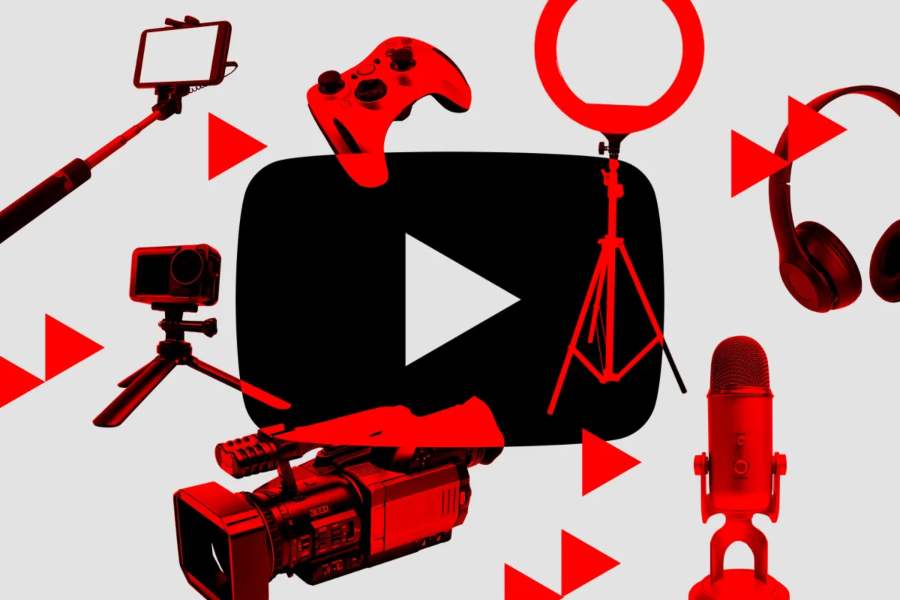Twenty years ago, YouTube launched with a simple goal: to make video sharing online easy. What started as a side project by former PayPal employees Chad Hurley and Steve Chen at a house party in 2005 has grown into the largest video platform — and one of the most powerful cultural forces — in the world. Today, YouTube is not just a video site. It’s a TV, radio, podcast hub, music player, social media network, live sports platform, and now even a home for games. It’s everywhere — and trying to be everything.
The numbers are staggering. Over 3.5 billion people use YouTube each month. Google’s latest reports show YouTube pulled in $36 billion in ad revenue in a single year. It has more viewership on TVs than Netflix and rivals the combined reach of Disney+, Prime Video, Peacock, and Paramount+. It is the second largest search engine (behind Google) and the second largest social media network (after Facebook). It’s also the largest music streaming platform when YouTube and YouTube Music are combined. It’s where people come for everything from Oscar-winning films to “how-to” guides, prank videos, and news.
But what makes YouTube work isn’t just its massive reach — it’s its simple but effective engine: gather endless content, surface the most relevant pieces to users, and reward creators so they keep making more. Scott Silver, a longtime YouTube engineer, calls this the platform’s “not-so-secret formula.” This loop — content, discovery, payment, repeat — is what turned YouTube from a quirky startup into the centerpiece of the modern entertainment industry.
As YouTube has evolved, it has broken into three major lanes. First, it serves as a streaming platform competing with Netflix through services like YouTube TV and premium channels. Second, it thrives on social video with Shorts, its answer to TikTok. Third, it remains the top destination for mid- and long-form creator content — the original YouTube model. This diversity gives it a unique edge: no other platform operates successfully in all three spaces at once.
For advertisers, this trifecta is golden. As Tara Walpert Levy of YouTube’s Americas team explained, brands no longer see YouTube as just digital video. They see it as a complete media buy — a place to run commercials, sponsor creators, and even drive e-commerce. YouTube has tailored its offerings to match advertising budgets, whether for NFL games, fashion shows, or viral challenges. It’s not just about the content anymore — it’s about making every view shoppable, trackable, and profitable.
The sheer volume of content is both a strength and a challenge. While competitors like Netflix curate a few thousand titles, YouTube houses billions. It doesn’t need to own “Stranger Things” because it has countless other creators making content viewers might love even more. YouTube’s edge is that it always has something — anything — that might keep a viewer hooked. And that’s where it wins.
But growth comes with complexity. YouTube creators now face increasing pressure to constantly adapt, upload, and evolve. The recommendation system favors consistency and trend alignment, pushing creators to produce more at faster rates. That’s one reason YouTube is betting big on AI — to help creators generate ideas, respond to comments, and even produce auto-dubbed videos. If it works, the content library will expand like never before. If it fails, YouTube risks becoming bloated with low-quality material.
Gaming is another frontier. After earlier stumbles trying to rival Twitch, YouTube now hosts not just streams, but game-themed content from creators across demographics, including stay-at-home moms and kids making Minecraft roleplays. With “Playables,” YouTube has introduced in-app games, hinting at ambitions to create game-based content loops that feed more engagement back into the platform.
Underneath all of this lies one guiding principle: get YouTube onto every device. Whether it’s a car dashboard, smart fridge, VR headset, or smartwatch, YouTube’s engineering team is tasked with making the app accessible everywhere. Vice President of Engineering John Harding explains the goal as getting YouTube to run on screens — and even on devices without screens. This requires a unified platform architecture, where features are developed once and rolled out everywhere.
What sets YouTube apart, even two decades in, is that it continues to operate like a startup with the reach of a media empire. It experiments constantly. It expands relentlessly. It refines its algorithm to keep viewers engaged, its monetization tools to keep creators loyal, and its ad formats to keep the revenue flowing. While newer platforms like TikTok might feel trendier, none have replicated YouTube’s full-stack system — content creation, recommendation, monetization, and global device distribution — at this scale.
YouTube is no longer the underdog or the disruptor. It’s the establishment. But it hasn’t stopped growing. The next phase isn’t just about videos. It’s about owning your time, no matter what form that takes — a video, a song, a podcast, a game, or something entirely new. As long as it captures your attention, YouTube wants it. And odds are, it’ll get it.







